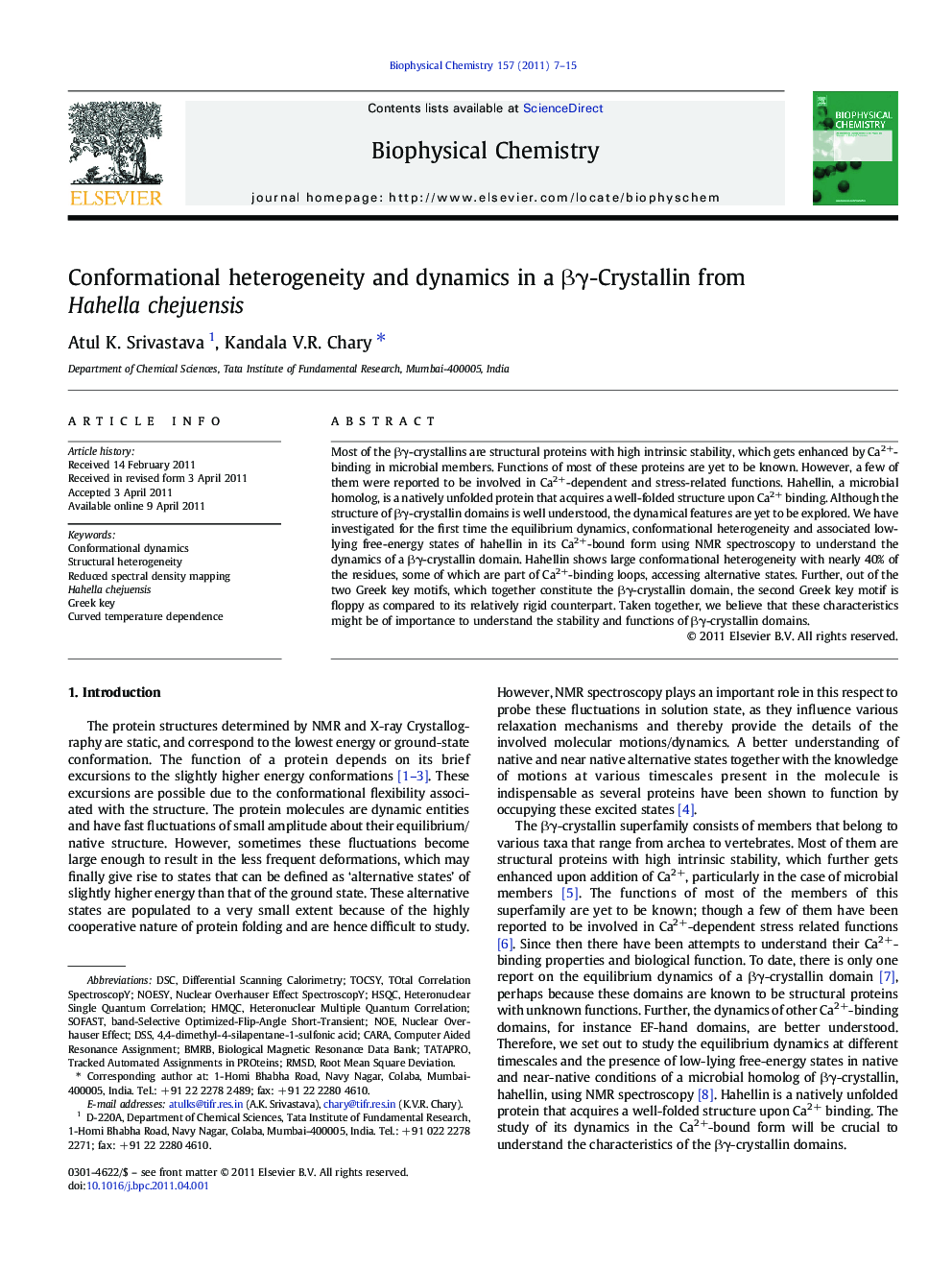| Article ID | Journal | Published Year | Pages | File Type |
|---|---|---|---|---|
| 5371354 | Biophysical Chemistry | 2011 | 9 Pages |
Most of the βγ-crystallins are structural proteins with high intrinsic stability, which gets enhanced by Ca2+-binding in microbial members. Functions of most of these proteins are yet to be known. However, a few of them were reported to be involved in Ca2+-dependent and stress-related functions. Hahellin, a microbial homolog, is a natively unfolded protein that acquires a well-folded structure upon Ca2+ binding. Although the structure of βγ-crystallin domains is well understood, the dynamical features are yet to be explored. We have investigated for the first time the equilibrium dynamics, conformational heterogeneity and associated low-lying free-energy states of hahellin in its Ca2+-bound form using NMR spectroscopy to understand the dynamics of a βγ-crystallin domain. Hahellin shows large conformational heterogeneity with nearly 40% of the residues, some of which are part of Ca2+-binding loops, accessing alternative states. Further, out of the two Greek key motifs, which together constitute the βγ-crystallin domain, the second Greek key motif is floppy as compared to its relatively rigid counterpart. Taken together, we believe that these characteristics might be of importance to understand the stability and functions of βγ-crystallin domains.
Graphical abstractDownload full-size imageResearch Highlights⺠First study of equilibrium dynamics, conformational heterogeneity and low-lying free energy excited states of a βγ-crystallin domain. ⺠Out of the two Greek key motifs that together constitute a typical βγ-crystallin domain, the second Greek key is found to be relatively floppy compared to its first counterpart. ⺠A βγ-crystallin domain is shown to possess large conformational heterogeneity with nearly 40% residues accessing alternative states.
